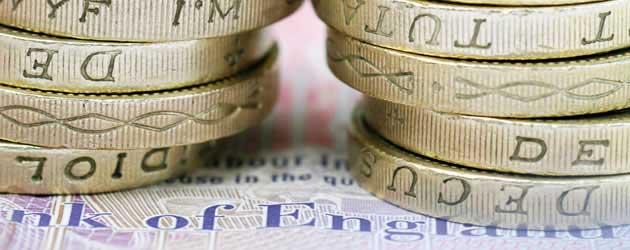
The Pound continued its impressive run yesterday reaching fresh multi-month highs against the majority of its currency peers as the Bank of England refrained from loosening monetary policy any further.
During Mervyn King’s last vote as Governor, the BoE held the benchmark interest rate at the current record low of 0.50% and opted against making any additions to the asset purchasing target of £375 billion. The neutral stance was widely expected among traders, but nevertheless the decision gave Sterling enough of a boost to build upon its bullish momentum so far this week.
The Pound to US Dollar exchange rate (GBP/USD) improved by a whopping 2.0 cents to touch a 3.5-month high of 1.5684 during the afternoon. The only major release out of America saw Initial Jobless Claims print, pretty much inline with economists’ forecasts, at 346,000 instead of 345,000. The minutely weaker-than-expected score did little to quell fears that the US labour market could be in the process of cooling down during the second quarter.
This afternoon’s crucial Non-farm Payrolls report should give a better indication of the American jobs market. A number in the region of 168,000 is expected, but if the actual score is significantly lower then the US Dollar could be set to fall even further against the Pound.
The ‘Greenback’ is currently experiencing a period of trading in which its direction is almost exclusively dictated by market sentiment regarding the Federal Reserve’s asset purchasing programme. If the Non-farm Payrolls print impresses then traders will most likely re-price-in the prospect of a slowdown to QE3, which in turn will lead to increased demand for assets denominated in US Dollars as the winding down of artificial bond-buying allows US Treasury yields to rise back towards more natural levels.
The Pound, rejuvenated by a full set of positive PMI results, strengthened against the Australian Dollar to reach a fresh 20-month high of 1.6353 (GBP/AUD) and a fresh 6-month high of 1.9543 (GBP/NZD) against the New Zealand Dollar.
Sterling also rallied to a fresh 6-month high of 1.6044 (GBP/CAD) against the Canadian Dollar, despite some hawkish remarks from new Bank of Canada Governor Stephen Poloz, who said that Canadian exports should begin to accelerate soon due to “gathering momentum in foreign demand”. A robust Canadian Ivey PMI score of 63.1 also lent the ‘Loonie’ a hand, but it wasn’t enough to outmaneuvre the advancing Pound.
The Pound to Euro exchange rate (GBP/EUR) hit a less substantial 2-week high as the European Central Bank also refrained from further monetary easing during June. The single currency took heart, initially, from ECB Chief Mario Draghi’s assertion that negative deposit rates were not considered necessary at this juncture. However, the lack of credible weaponry left at the ECB’s disposal worked against the Euro towards the end of the European session, as investors pondered whether the Central Bank had any more tricks up its sleeve in order to revitalize the Eurozone economy.

Comments are closed.